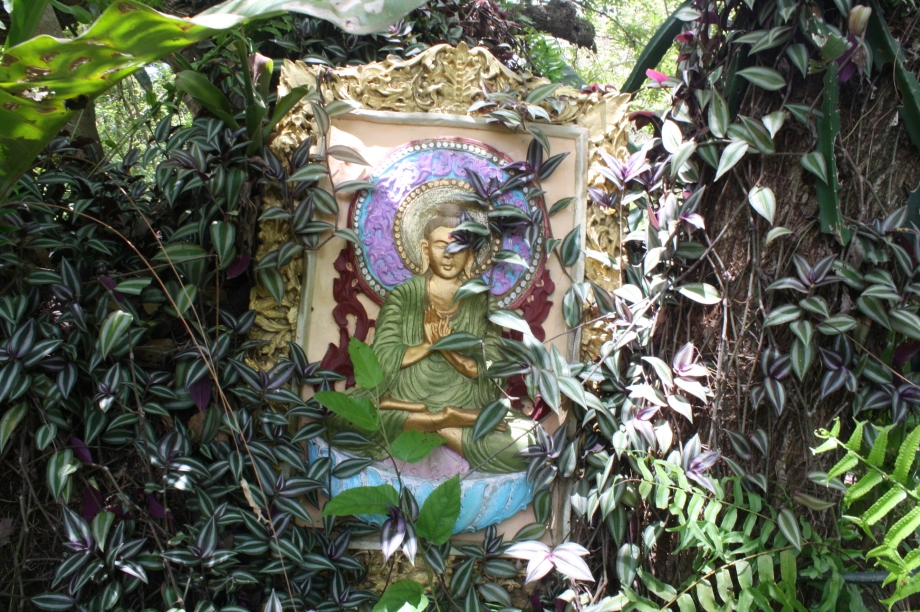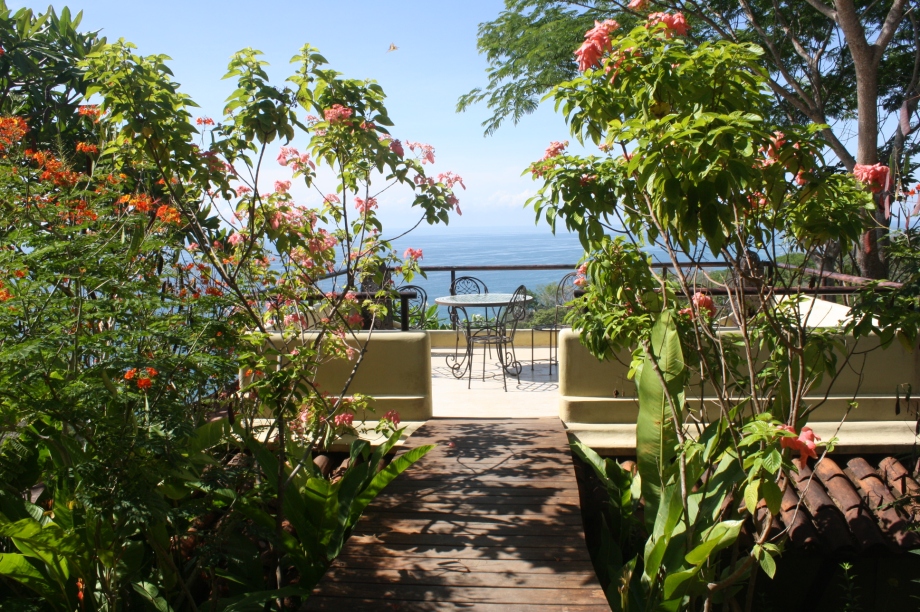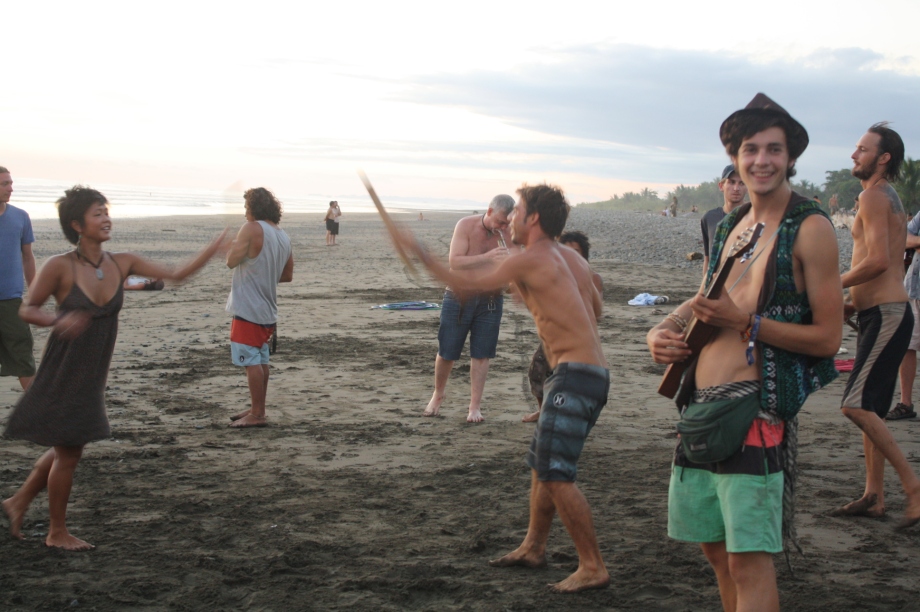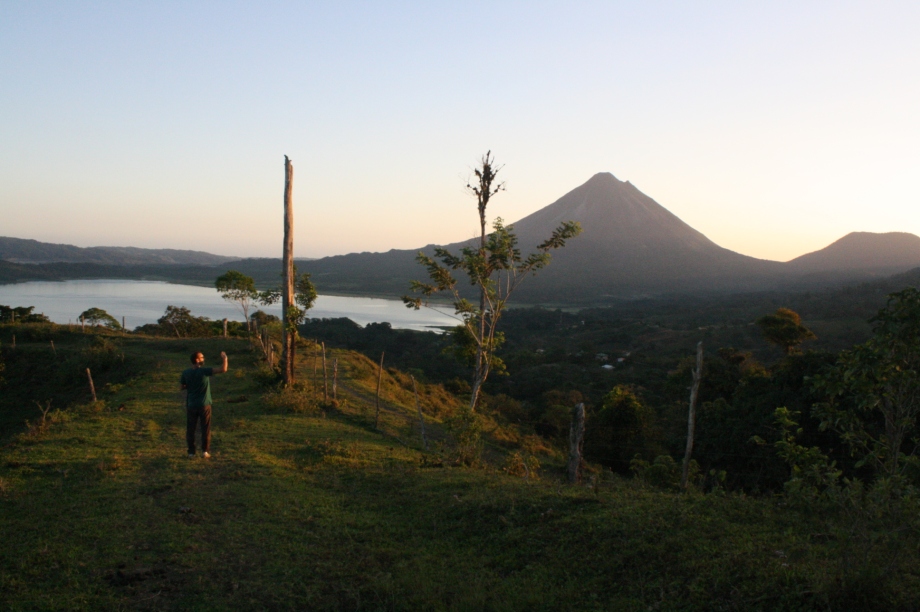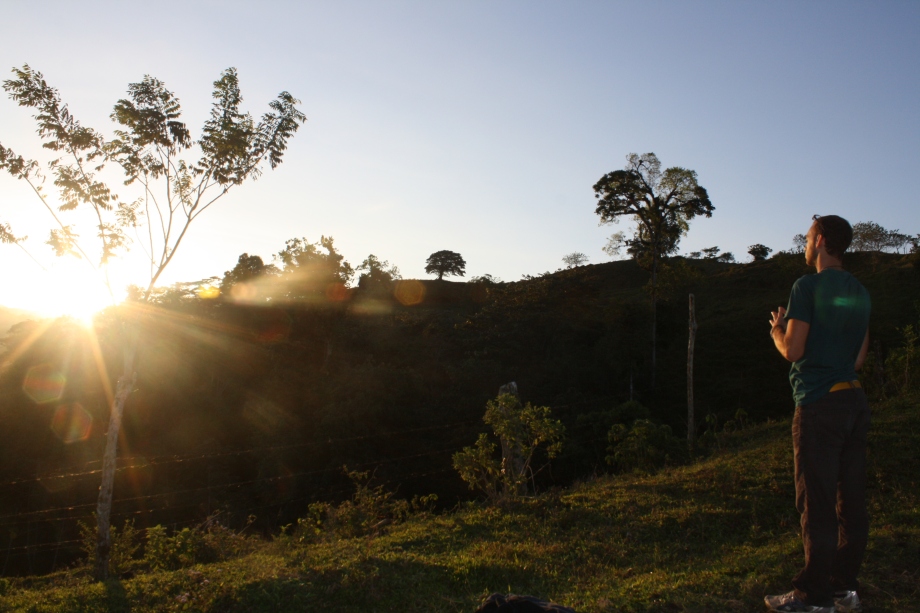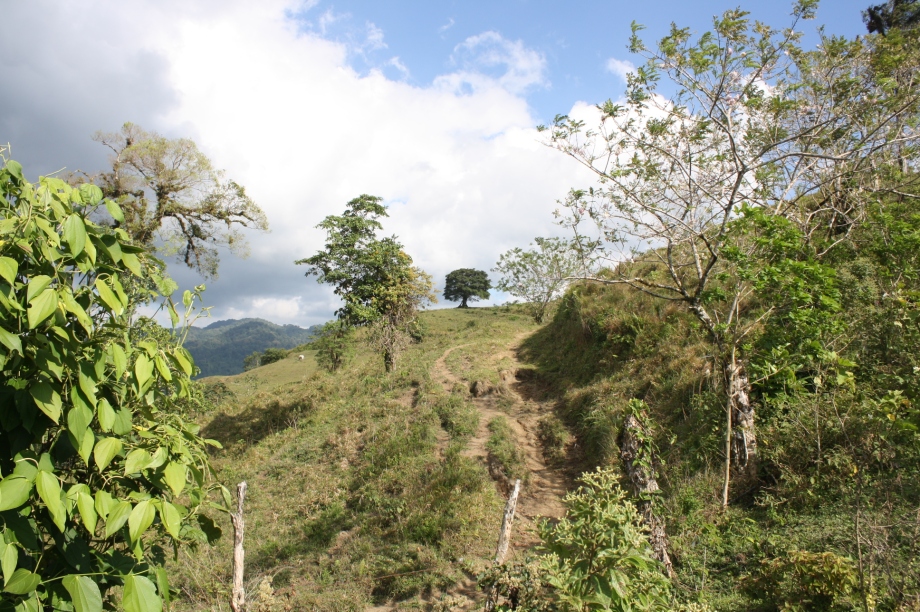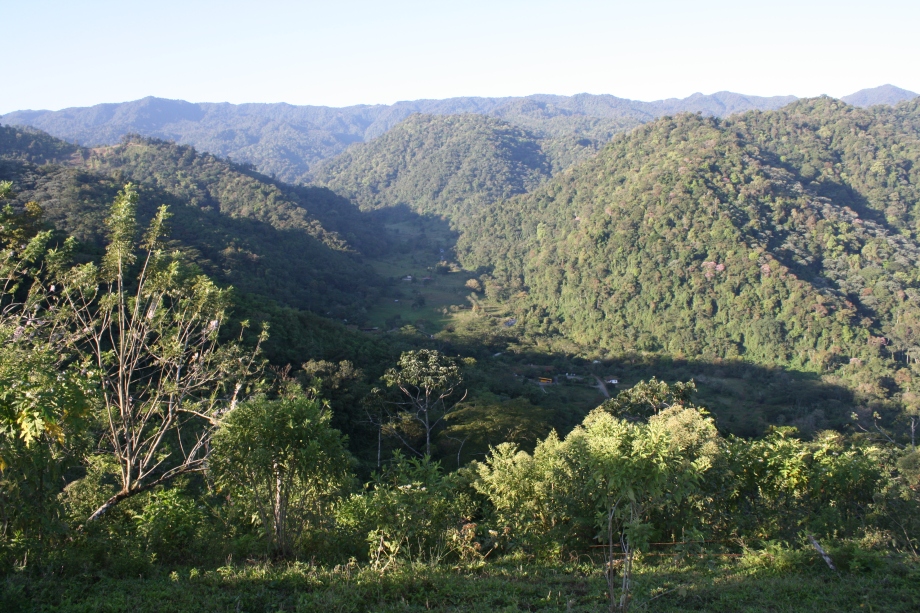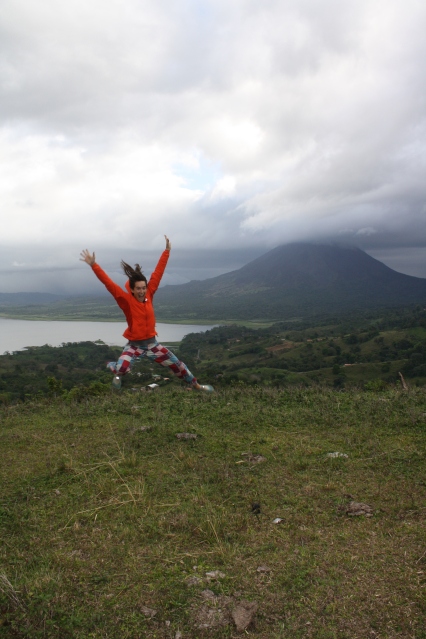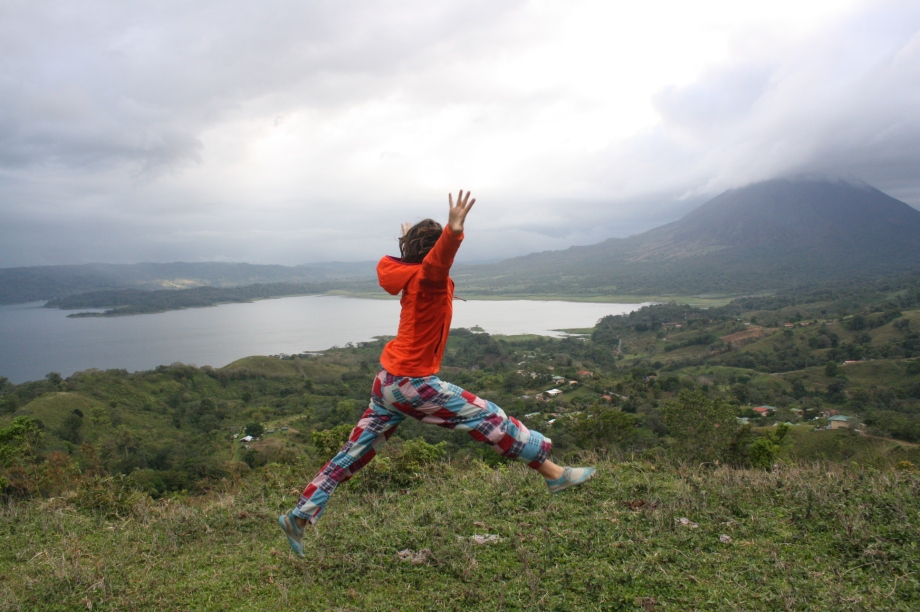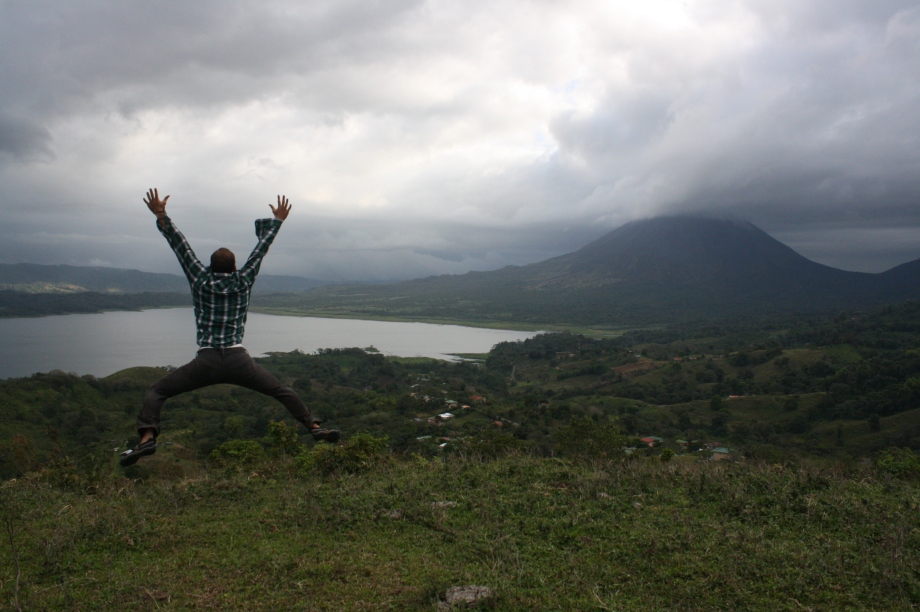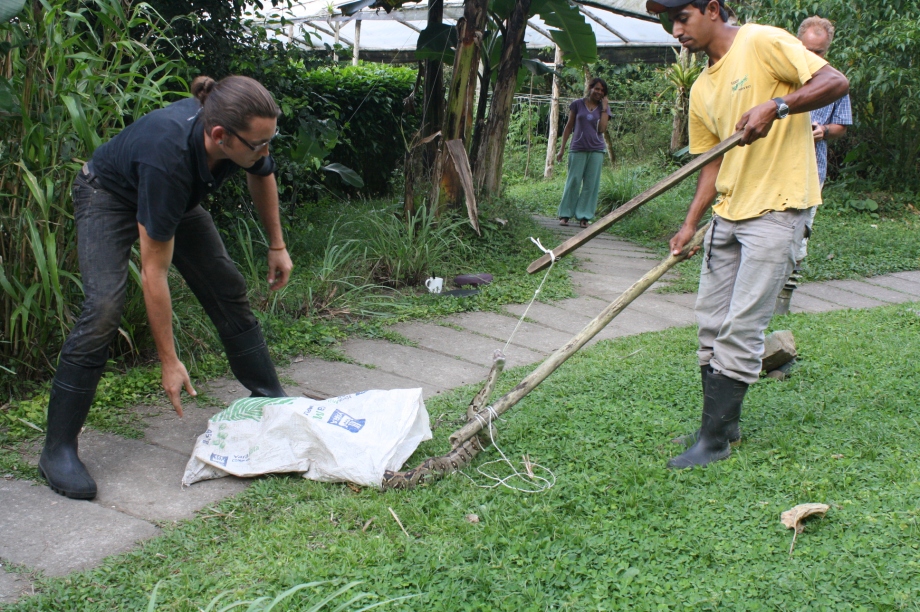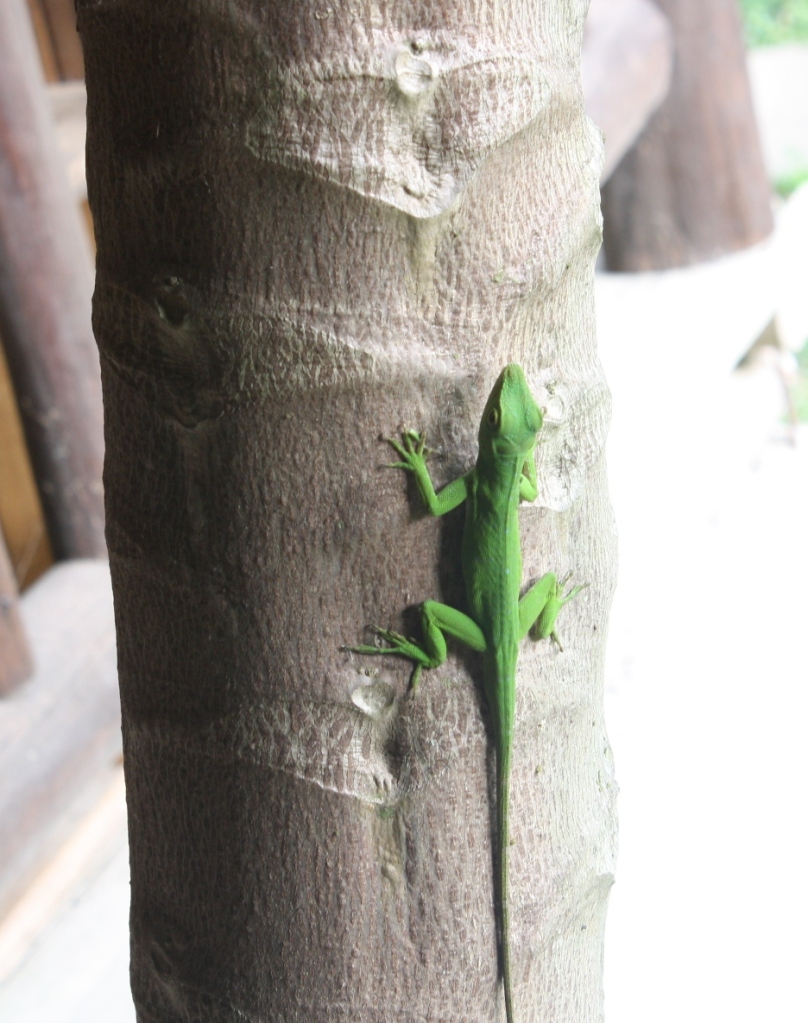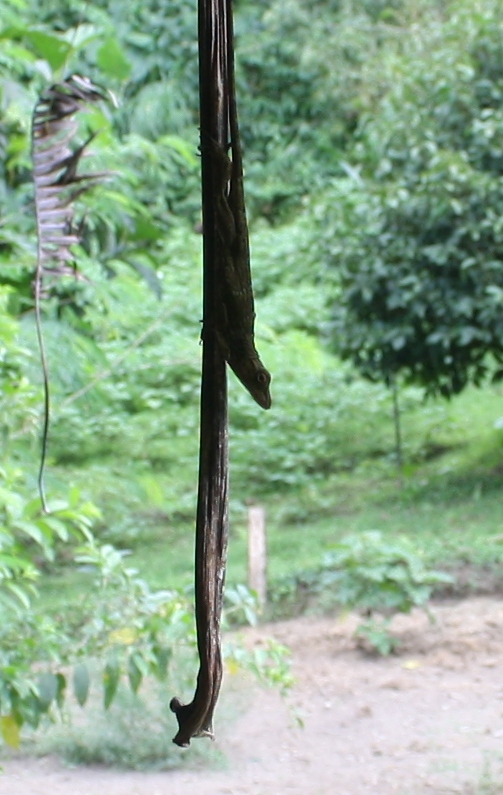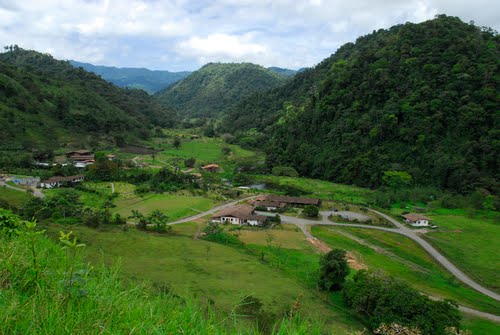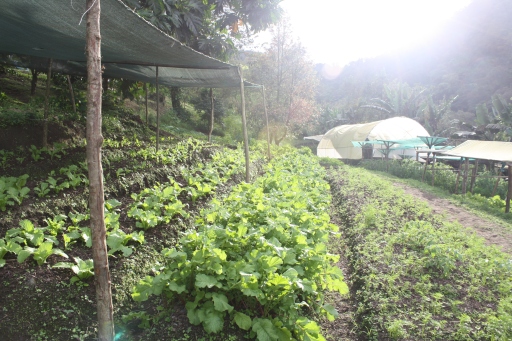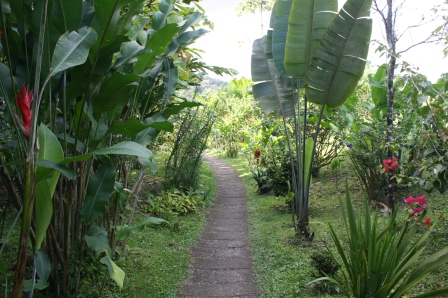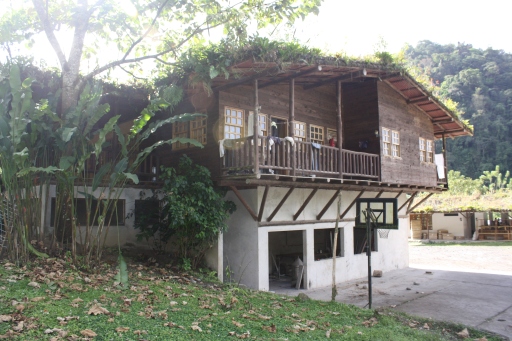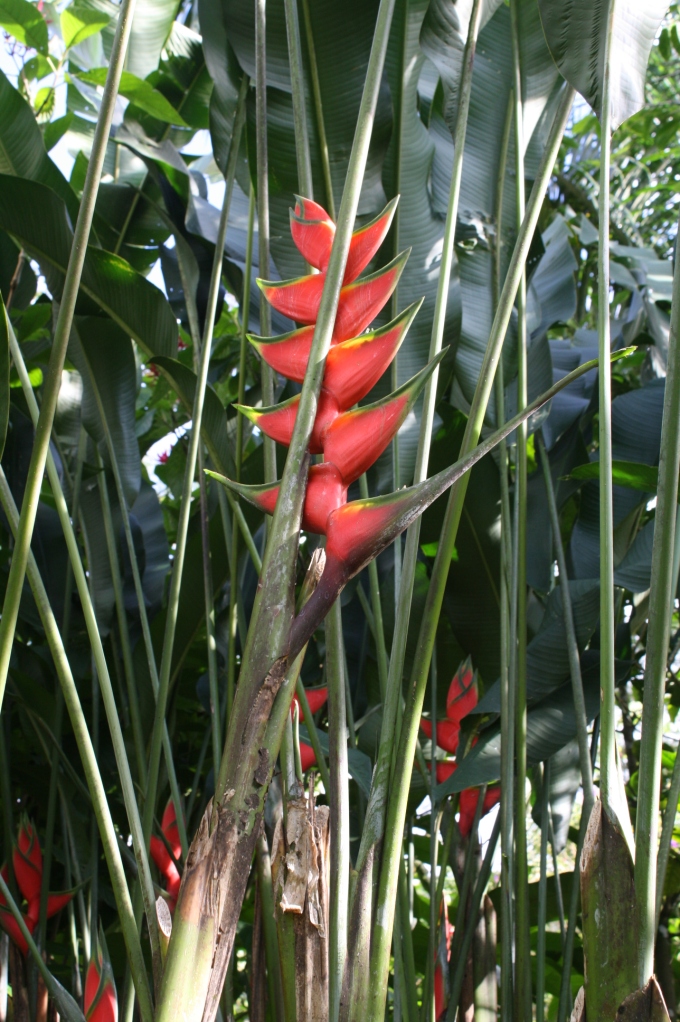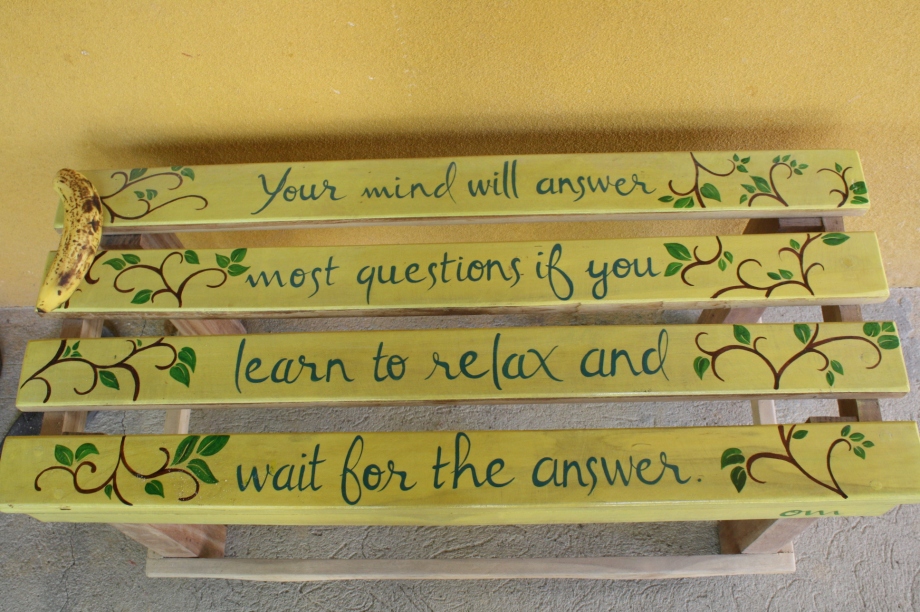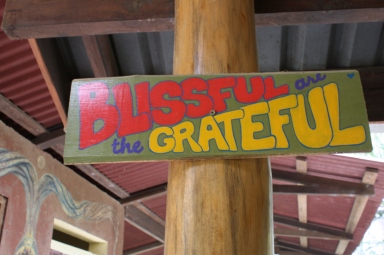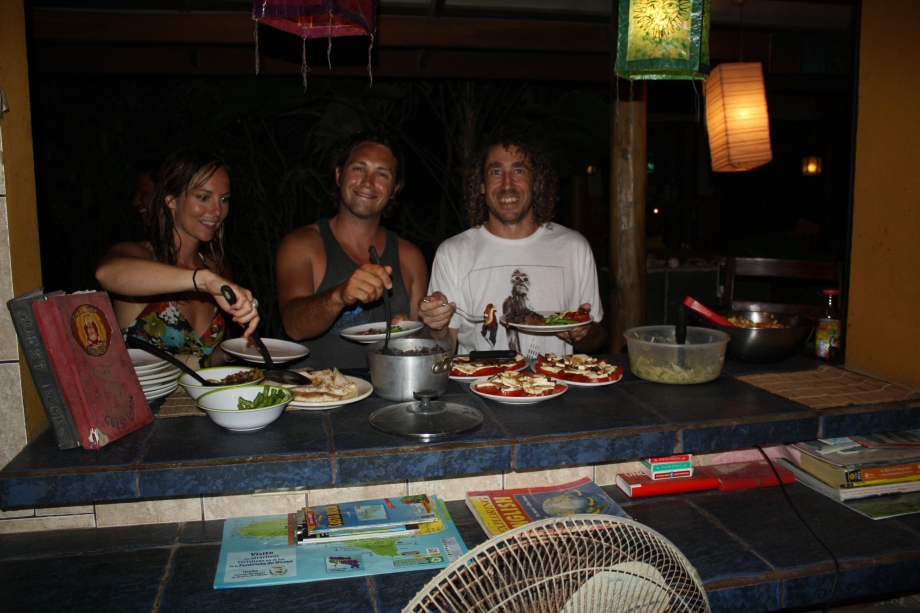Attitude of Gratitude:
I’m thankful that no matter where I go in Costa Rica I somehow end up seeing a familiar face. I’m thankful for natural tidal pools. I’m thankful for Montezuma.
In my hostel one night my roommate Elizabeth and I started talking about Montezuma. She said, “I’ve been to so many places in the world, and I’ve heard here more than anywhere else people say, ‘That person is so weird. That person is a little off.’ I’ve never heard people say that so many times in one day before. This place definitely attracts people who are a little lost.”

Right after this conversation my Tico friend Andrei picked me up to get dinner. I asked him about his day, and he shook his head as he said, “Oh man I just got stuck in a two hour conversation with this guy. He just got divorced, and he kept talking about burning things. Crazy people here.”
Montezuma attracts lost souls.
One day on the street I overheard a guy say to two women in a stopped car, “There are no rules here. We’re the rulebreakers and the black sheep of our families.” Days later at the Saturday market I saw him with a wheelbarrow full of coconuts. He kept muttering, cursing and pointing fingers at no one in particular. Andrei later told me that that man, Jack of the Jungle, took too much Reina de la Noche and never came back.
Montezuma attracts spiritual-seekers, yogis, health-conscious folks, healers, people who need to be healed, creators, kindred spirits, backpackers and all kinds of alternative types.
A few times a week I took vinyasa flow classes at Montezuma Yoga, a beautiful outdoor terrace studio at Los Mangos hotel. There I met like-minded people who I saw at the community farmers’ market and other events around town. I also took classes at Devaya Yoga, right in town. One day I was the only one who showed up, so Devaya, the owner, gave me a “healing bodywork” session. In between talking fast about her own life, she’d say random things about my life like, “Continue to use your non-dominant hand. You’re not going to be a journalist, but you’re going to write something. Writing and beauty will dominate your life. You’re traveling alone, aren’t you? Brave for a Libra.”

Montezuma Yoga

Montezuma Yoga
One of my favorite yoga classes was on the beach for a Full Moon Rise class outside of Ylang Ylang Beach Resort led by Ireni Stamou. It was one of the best yoga classes I’ve ever taken. After Shavasana the full moon hung low in the sky over the ocean illuminating all of us.
Because there was a retreat happening I was never able to take a class there, but another yoga attraction in Montezuma is Anamaya. It’s a body, mind and spirit resort on top of the hill with spectacular views. I would love to go to a retreat there someday.
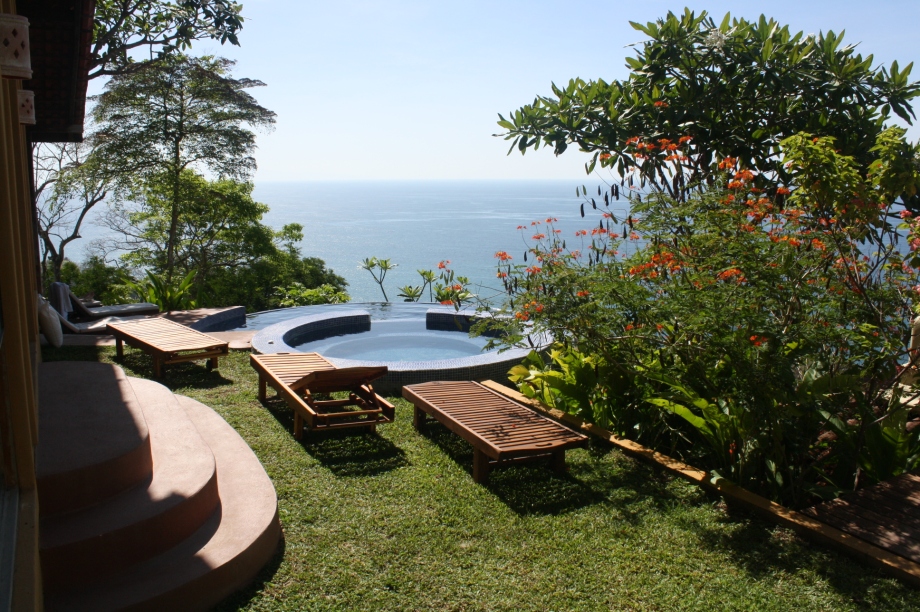
View from Anamaya
Almost every day in Montezuma I ran into someone I knew. My first night in Montezuma I saw my manager from the outdoor store I worked at in New Jersey. He just happened to be in the middle of the street, right across from my line of vision. I knew he was going to be in Costa Rica, but I didn’t expect to see him in the middle of the street on my first night in Montezuma.
I ran into three people who also volunteered at Rancho Margot. One of them, Jennifer, told me, “You’re gonna love it here. Happy, healthy people.” She’s studying with Dr. Teodoro, a naturopath, at the 03 Institute in Delicias, which is up the hill a bit from Montezuma on the way to Santa Teresa. The 03 is a spa, wellness and healing center. I did the sauna and cold plunge there and also got a facial. I highly recommend this place for everyone, even if you think you don’t need any kind of treatment. It’s a beautiful, tranquil place just to be.

O3
Montezuma attracts love.
When I was in Santa Teresa my hostel roommate there said that Montezuma was thee place to fall in love. Her and her boyfriend were having problems, and Montezuma changed everything. A guy I met in Montezuma told me, “Montezuma is special for relationships. There’s something about it that makes you fall in love.”
Some say it’s because of the waterfalls.

I got this picture from google because the day I was there the water was brown from the mud.
Andrei said Montezuma is his favorite place in Costa Rica. “I think it has something to do with the waterfalls. Something about them affects your wellbeing and your spiritually. It releases something in your mind,” Andrei said. “Montezuma just maximizes whatever you’re feeling. Here I just feel things. I stop thinking and start feeling.” Cesar, the co-director of my hostel, told me he originally moved to Montezuma because of the waterfalls.
Others will tell you it’s because Montezuma is one of the Blue Zones of the world. A Blue Zone is an area where scientists have found that people live longer and know how to be happier. The whole Nicoya Peninsula is considered a Blue Zone. In 2004, the man behind the Blue Zone concept, Dan Buettner, teamed up with National Geographic and hired the world’s best longevity researchers to identify places around the world where people lived measurably better. In these Blue Zones they found that people reach age 100 at rates 10 times greater than in the United States. Find out more information about Blue Zones here.
Montezuma attracted me.
Before I came to Costa Rica everyone that had been to Costa Rica told me that I had to go to Montezuma. They all got the same dreamy look in their eyes and sheepish grin as they talked about it. Before I came, it was one of the only towns in Costa Rica I knew about. I was hoping to go right away, but didn’t make it until April. In Costa Rica different people I met had opinions about Montezuma that went from one side of the spectrum to the complete opposite. While I was in Puerto Viejo, I felt really called to Montezuma. I knew it was time to head there.
The first few days I spent in Montezuma I didn’t see what all the hype was about. For starters the prices of everything from clothing and souvenirs to food were the most expensive I’d seen in the whole country. Most casados cost anywhere from 3500 to 4000. But I did find one for 2500 at El Capitan, a hostel/restaurant in town. There are places in Costa Rica with a similar vibe that have cheaper price tags. But by two weeks in, I too started to develop that dreamy look in my eyes and fell under Montezuma’s spell. I abandoned my ideas to explore other parts of the country and decided to stay in Montezuma longer.
Montezuma is on the eastern side of the southern tip of the Nicoya Peninsula. The sunrise side. The sun rises in Montezuma and sets in Mal Pais/Santa Teresa, about 19 km away. To get to Montezuma you drive down steep hills that never seem to stop winding. Between the trees, azure water sparkles in the distance, but it doesn’t seem like anything else can exist down there.

Is there anything down there?
Most of the restaurants, travel agencies and souvenir shops run along the two perpendicular streets along the beach. The Nicoya Peninsula’s information website says, “Montezuma’s town center, with charming old wood houses, itinerant artists, and vivid street life has an almost Caribbean flair and feels like the open-air living room of the community where a continuous mellow party takes place.” There is no post office or bank, but there’s an ATM. There are plenty of vegetarian eateries in town and quite a few places to get vegan food as well. The party night in town is Thursday when Chico’s Bar hosts Reggae Night. The street is blocked off for performers and firedancers.
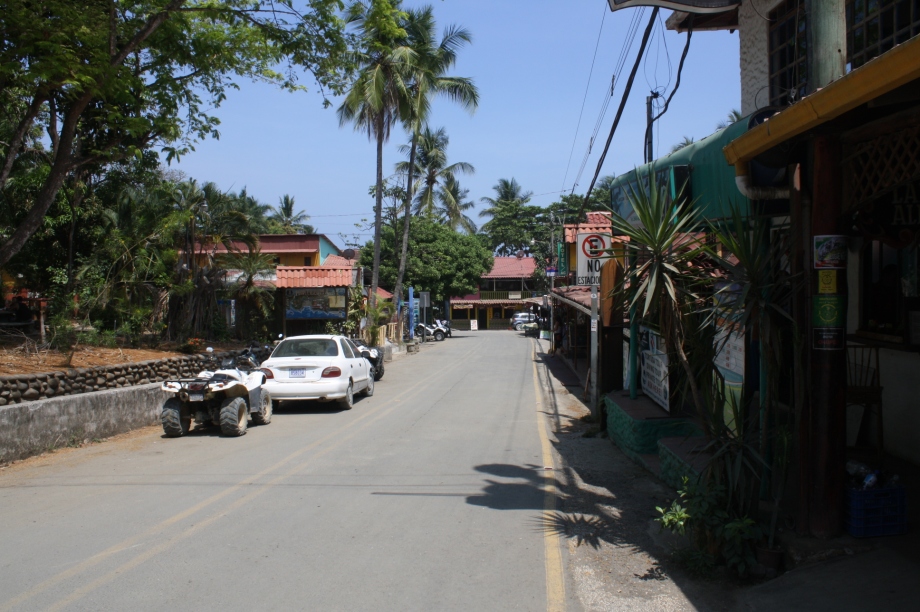
One street in town

The other street in town
In Montezuma I was instantly greeted with kindness and remembered how friendly the locals on the Nicoya Peninsula are. A huge part of that is thanks to Kerri Bowers and Cesar Benavides, the founders of Proyecto Montezuma, a nonprofit organization which provides free English classes for locals, TEFL training, a tour agency, a hostel, and more, all in one. I ended up staying at Proyecto Montezuma for 16 days when I originally thought I’d spend a week at the most.
The hostel, on a ledge overlooking the ocean with two accesible beaches and natural tidal pools, is the perfect place to relax. It’s about a seven minute walk from downtown and a two minute walk from the waterfalls. It’s perfect for people who want a quieter stay, away from the hustle and bustle of town.

The side of Proyecto Lodge that faces the water

The view on the right of the hostel with the tidal pools.

The view on the left side of the hostel.
That is what I had right at my fingertips day in and day out. Life just continues to get better.

